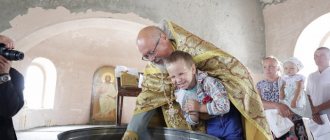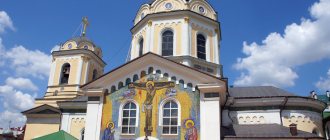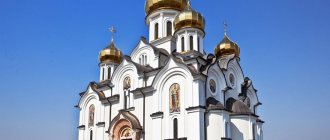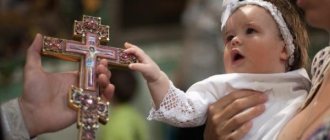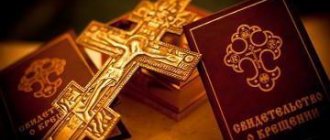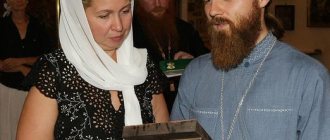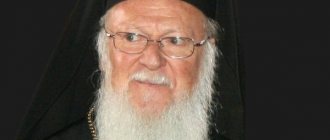The altar in the church is the elevated part of the temple for services
The altar is the elevation of the eastern part of the temple, used during services.
Clergy can enter the church altar through 3 doors:
- royal doors - the main ones, which are opened in solemn places of worship (carrying out the cup of the Holy Gifts);
- two side doors are deacon doors, through which deacons pass during the service.
Photo of the altar inside
The altar in the church is located in the eastern part of the temple.
In the Catholic tradition, the altar itself is called the altar, sometimes sculptural altar paintings. In Orthodox churches, the altar is built in the eastern part of the building.
The altar is facing east due to tradition in the construction of temples. In architecture, the central portal in the temple receives the first rays of the sun. The altar in the temple is the first to receive the sun's rays.
Chapel in the temple: additional altar
Sometimes there are several altars in a temple. They are necessary in large churches where liturgy is held several times a day.
Only one liturgy can be celebrated at each altar per day.
An additional altar is called a chapel.
- facing east;
- separated from the main premises of the church by an iconostasis;
- located away from the main altar, also on a raised platform.
According to church regulations, only priests of the highest rank are allowed to the altar.
Church without altar: chapel
In the Orthodox tradition, there is a place where a believer can pray and help a person turn to God. It can be a church without an altar - a chapel.
The difference between a church and a chapel is the presence of an altar.
- Any person can build a chapel; it can be built anywhere;
- Only prayer services are held - small services in honor of a church holiday or an important event for the country;
- The chapel should be illuminated in honor of the saint in whose honor prayers are held on the day of remembrance of that saint;
- A cross must be erected on the chapel;
- The number of icons is not limited.
Liturgy cannot be held in the chapel.
Chapel in the Moscow region
Altar that can change: folding
The home altar of Orthodox believers consists of 2 or 3 small icons that are connected by loops.
- A folding bag is necessary for those who cannot attend church (at a service, on a business trip, etc.);
- It does not take up much space, you can build an altar that can be changed for prayer.
In Russian Orthodoxy, the most revered and widespread images are:
- Mother of God;
- Jesus Christ;
- Nicholas the Wonderworker;
- Panteleimon the healer.
A triptych is a fold of three icons, most beloved in Rus'.
- The center of the triptych is closed with doors;
- The doors resemble the Royal Doors.
Carved triptych
Memorial service as a memory of the deceased
The memorial service occupies a special place among funeral commemorations of the dead.
The basis of the funeral service is the commemoration of deceased Christians baptized in Orthodoxy. The physical death of a person in no way means that his soul has found eternal peace. It is for this reason that the priest and parishioners pray for the soul of the deceased person, because she may be tormented by remorse about past sins, she may suffer and not find a place for herself. A memorial service must be ordered not only immediately after death, but also on the ninth and fortieth days. It is ordered by relatives or friends on the birthdays of the deceased, on his name day, as well as on the date of his death every year. The Church holds memorial services not only for individual deceased parishioners, but also Ecumenical memorial services. They can only take place on special days called “Parents’ Saturdays.”
In the altar of the Orthodox Church there is a throne where communion is celebrated
The altar of an Orthodox church is a special, main part of the structure.
Orthodox churches include:
- porch;
- middle part;
- altar.
The narthex in the temple is the western wing of the building
To climb to the porch you need to climb several steps to the porch.
In the narthex the following takes place:
- engagement;
- prayers are read;
- baptism.
After the vestibule, the believer goes to the middle part, where worshipers are located during the service. The altar and the middle part are separated by an iconostasis.
The altar structure includes 4 elements
The altar in the church is located on a dais, since the altar is the receiver of the Throne of God. The elevation in front of the altar is a solea, a semicircular platform. In the center of the solea there is a semicircular elevation - the pulpit. The pulpit is a platform in front of the altar where the gospel and sermons are read.
The altar structure includes:
- irestol;
- altar;
- sacristy;
- departments.
The throne is a special part of the altar where the Sacrament of the Eucharist (Bloodless Sacrifice) is performed. Inside the throne are the relics of saints. This is due to the tradition of early Christianity. The first Christians prayed over the tomb of the saint.
The throne contains:
- antimins - a canvas depicting the position of Christ in the tomb;
- tabernacle - a vessel where bread and wine are stored for communion outside the church;
- monstrance - a vessel of the Holy Gifts for the communion of the sick;
- the gospel, which is read by the clergyman at the service;
- cross.
Behind the throne on the left is a high place - a symbol of the throne of Jesus Christ.
- an image of Christ is placed above the high place;
- in a high place there is a large cross, an icon of the Mother of God.
The altar part of the temple includes an altar, on which the bread and wine used in communion are prepared.
Arrangement of objects on the throne
High table in church - lectern
In Orthodox culture, lecterns are portable and installed to the right of the royal gate. Often the lectern is placed in the center of the temple, in front of the throne. The lectern, a high table in the church, is used as a stand for the icon, so believers can venerate the face.
The meaning of the throne in Orthodoxy
The Throne is considered a sacred place in God's temple, the area where the Savior himself naturally resides in the Holy Gifts, that is, wine and bread, personifying the Blood and Body of Christ. The sacred meal is often associated with the Tomb of the Savior, the Son of God or the Trinity, which is defined by the multiplicity of biblical events in which the omnipresence of God is constantly manifested.
The throne of the temple marks the immaterial Throne of the Most Holy Trinity
The altar, in the middle of which stands this Sacred table for the rite of Communion and where the Liturgy is served, symbolizes the spiritual sky, the place where the infinitely blessed Almighty Creator resides. It is considered the main place of the church building; only clergy and readers are allowed to enter here.
Important! Men who have received the blessing of the bishop may also find themselves within the altar area; women are not allowed to enter here.
Read about the Orthodox church:
- Altar in an Orthodox church
- How to properly place candles in a temple
- Why do ministers extinguish candles in church?
The purpose of the altar is church sacraments
The altar part of the temple is intended for holding church sacraments. The altar is considered a holy place where the Father and the Son descend upon those praying. Liturgy is the main church service during which the rite of Communion is performed.
On the altar:
- minister's vestments;
- washing his hands;
- preparing prosphora (bread).
Afterwards, the clergyman turns to God, asking for blessings on the gifts.
- the preparation of the prosphora represents the coming of Jesus;
- the altar in the temple marks the cave where the Son of God was born.
Preparation of prosphora by the Patriarch of Moscow and All Russia
By leaving a comment, you accept the user agreement
Liturgical items
Liturgical objects are objects used in the performance of worship.
The Eucharistic Lamb is a quadrangular
A lectern (Greek “book stand”) is a tall, elongated tetrahedral table with a flat board for the convenience of reading liturgical books while standing or venerating icons placed on it.
Antidoron ( Greek - instead of gift) - part of the prosphora from which the Eucharistic Lamb was taken out for the sacrament of communion. Distributed to the faithful at the end of the liturgy.
Antimins - (Greek - instead of and Latin throne) - a quadrangular platform made of silk or linen with sewn-in particles of relics, on which the liturgy is performed.
Artos (Greek - bread) is bread that is blessed with a special prayer on Easter Day. It is kept in the church throughout Bright Week, and on Easter Saturday it is crushed (cut into small pieces) and distributed as a shrine. Artos reminds believers that the Savior has risen and is with us.
Liturgical books are books for performing divine services, containing the rites of services and liturgical (statutory) instructions. They are divided into sacred liturgical and church liturgical.
The structure of the throne
This sacred meal is the most important shrine of the Christian church, the abode of the Lord, it is covered with elegant brocade fabric. Under each of the altar tables the miraculous remains of a saint are kept. The tradition of placing the relics appeared during the persecution of the first Christians, who were forced to perform divine services in caves on the coffins of their dead brothers.
Important! Particles of the holy righteous man under the Sacred Table are an obligatory component of church decoration; without this, rituals become impossible.
The following attributes are always on the Throne:
- Katasarka (translated from Greek as “flesh”) is a specially consecrated white underwear (sracishche). This cloth covers the Sacred Table to the very base; it symbolizes the Shroud in which the body of Christ was wrapped during its placement in the Tomb.
- Vervier is a 40-meter rope used during the consecration, with its help the Throne is encircled. The attribute is a symbol of the fetters by which Christ is bound, as well as that divine power that holds the entire universe within itself.
- Indity (“dressy clothing”) - for Christians, it represents the robe of the Glory of the Savior, the Son of God. This greatness is inherent in God even before the creation of the Universe. The glory of the Lord was revealed to the apostles after the Transfiguration of the Messiah on Tabor; until that time, the disciples doubted the divine power of Christ.
The throne is located in the center of the altar, opposite the royal doors
Initially, the Sacred meal was covered with both “lower” and “upper”, “ornamental” cloth. The bishop who led the ceremony wore a white robe (srachishche) at the beginning of the ceremony, which contained an aphorism on the Shroud of the Savior. When the main part of the altar was covered with indium, the bishop also dressed himself in elegant fabrics.
Important! During the consecration ritual, only church ministers can be present at the meal. They can cross the altar space only when necessary; when there is no need, the Throne must be walked around from the east. Attributes that can be transferred (icons, censers, etc.) are removed from the altar. This indicates the immutability, immobility and firmness of the Divine Law; objects are returned upon completion of the ritual.


